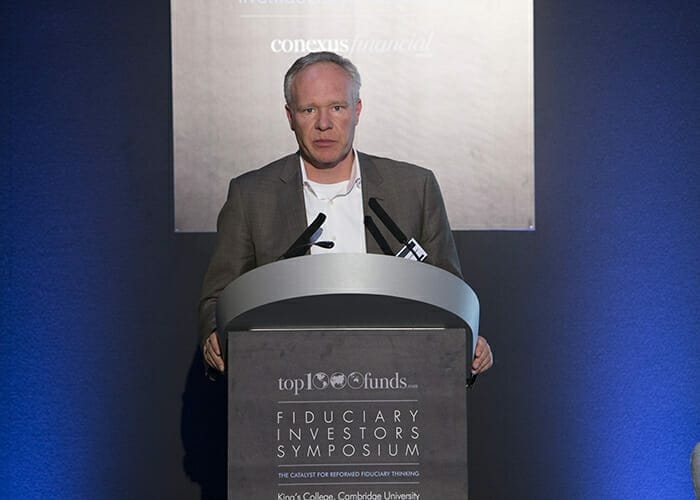The price on carbon should be $100 per tonne of carbon dioxide emitted, according to Professor Chris Hope, reader in policy modelling at Cambridge University’s Judge Business School, who presented to delegates at the Fiduciary Investors Symposium at Cambridge University.
The impact of such a price is that the hidden economic costs exceed the after-tax profits for companies between 2008 and 2012, he says. Further, for coal companies, the hidden economic costs don’t just exceed their profits – it exceeds their revenues.
“We have to do something to raise the costs of climate change; regulation will have a bigger cost than a tax,” he said.
“So we should charge $100 per tonne on emissions that go into the atmosphere – if we were to do that in the UK we would end up with revenue of about £50 billion per year. This won’t destroy the economy, it would stimulate the economy.”
If the UK government were to raise this new tax revenue they could make changes in other areas – for example, decrease the rate of income tax from 20 to 15 per cent (£20 billion), reduce VAT from 20 to 16 per cent (£20 billion), protect the poor and elderly from energy price increases (£5 billion), support research and development, information campaigns (£5 billion).
However, Hope, who was the lead author on the UK’s Third Assessment Report of the Intergovernmental Panel on Climate Change, warned that revenue raised from a carbon tax should not be put it into subsidies for green investments.
“Governments are very bad at picking those winners; they should put it back into general revenues.”
Hope was also the specialist advisor to the House of Lords Select Committee on Economic Affairs Inquiry into aspects of the economics of climate change, and an advisor on the PAGE model to the Stern review on the Economics of Climate Change.
He uses an integrated assessment model for climate change policy that integrates science with economics and talks about the effects for policy makers and investors. It gives a mean estimate of the social cost of CO2.
It builds in some views of the future relating to demographics, emissions, atmospheric considerations, radiation and global climate, regional climate, direct impacts on ecosystem crops, then social and economic impacts.
The model Hope provided to the Stern review and US EAPA is called the PAGE model and divides the world into eight regions; uses 10 analysis years up to 2200; four impact sectors including sea level, economic, non-economic and discontinuity; looks at two policies and their differences; includes 112 uncertain inputs; and does 100,000 runs to calculate distributions of outputs.
“The net present value of global impacts of a business-as-usual scenario has a mean value of $400 trillion of net present value of impacts. This is why Stern says climate is the biggest market failure the world has ever seen,” he said.
“It is quite hard for investors or governments to do something with that number because it’s so large. It is better to identify what the extra impact is if you put one more tonne of this gas into the atmosphere, or the benefit if you don’t put one more tonne into the atmosphere.”
The session was chaired by Fiona Reynolds, managing director of the Principles for Responsible Investment (PRI), which has called on governments to take the COP21 seriously and has called for a price on carbon. The PRI investor statement on climate change is signed by 204 investors with $20 trillion.




